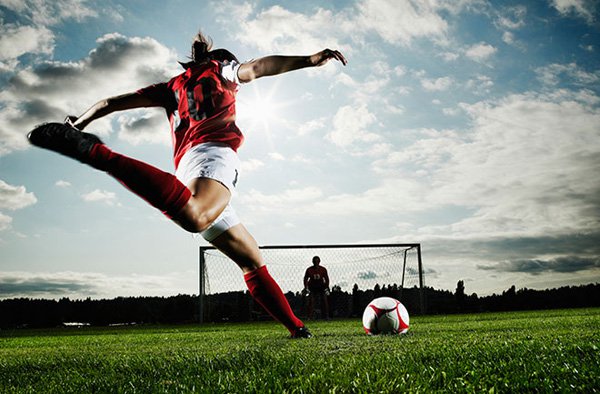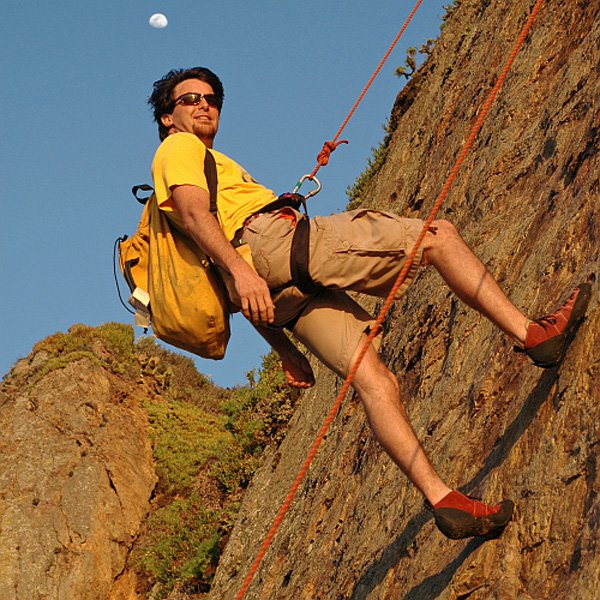Hounding for Herrington Crappie
Describing crappie fishing on Herrington Lake in Central Kentucky reminds me an awful lot of when I first learned to type. The most productive method seems to be "hunt and peck."
Notorious for its difficulty to fish, this narrowly winding lake can make fools of the best anglers. Clear, deep water, steep walls, limited visible cover and an extreme amount of pleasure boat traffic can spell disaster for weekend anglers. Nevertheless, no one can argue the quality of fish (of any type) that those who fish Herrington regularly come up with. Kerry Prather, central district fishery biologist with the Kentucky Department of Fish and Wildlife Resources, says that the crappie fishery in Herrington is in very good shape. Herrington is termed eutrophic by biologists, which means the waters are quite fertile and provide a good growing environment.
One problem Prather admits concerning staying in touch with how the crappie are doing in this lake is being able to sample the lake adequately.
"Because Herrington doesn't have a lot of shallow areas, it is difficult to use trap netting very well. We have a very hard time finding areas to set nets that will catch a good number of crappie for us to take data from," said Prather.
"But, we do know there are lots of crappie present from our creel surveys, and these fish seem to be very healthy," added the biologist.
Kenneth Craig and C.W. Green can both vouch that when you catch crappie from Herrington, they compare with fish caught from any of the best known slab waters. Green has over 20 years experience with crappie on this lake. Craig has taken second place honors in the Kentucky Open Crappie Tournament on Lake Weiss in Alabama twice in five entries and fishes Herrington just about every other day. The men's combined knowledge of the lake, and crappie activity would be tough to match anywhere in the area. There are several keys in locating and connecting with Herrington crappie during the spring fishing season. Over the years, they have located the spots where crappie congregate, and have taken a number of fish in shallow water. That seems a little unusual, since Herrington is most often crystal clear.
Finding cover in this lake is hard, unless you're willing to spend some time at it. According to Craig, he's found over 300 spots where crappie hold to cover. Some are natural and have been in place for many years while others are man-made hides that anglers have constructed by sinking floating debris.
"You can make yourself a few places for crappie by keeping some wire and a concrete block handy. When the water comes up in the spring, there are a lot of floating logs and branches that drift down the lake. Tie a few of these up and sink them where you can remember where they are, and at times these hides will hold some fish for you," said Green.
Another good way to find sunken logs or stumps and root wads is to use a graph. Sometimes trees are cut along the bank for use as cover, and you can see where they've been cut. Usually, the actual hide won't be far from where you observe the missing tree top or freshly cut stump. The cover may be in 40 feet of water, but you can locate it if you take your time.
Describing the fishing as a "hunt and peck" situation means that rarely do either of these experts catch big numbers of crappie from the same spot.
"If you catch four or five from one tree, you've done well and should be getting ready to move. If I haven't caught a fish in 10-12 casts that fan the cover, I'm gone," said Craig.
During the late April-through-early June period, crappie can be found in shallow cover along creek run-ins in the coves. Many of these junctions have natural cover present. Interestingly, the clarity of the water doesn't seem to slow the fish from hitting, and often you can see the fish hit your lure. Craig says noise doesn't bother crappie too much either, but movement directly over where they are holding can scatter the fish.
"I catch several fish in spring in four to six feet of water around some kind of cover, say a submerged Sycamore tree or stump," said Craig.
"You can locate what we call "pockets" along the creeks, which may just be an indentation in the bank or a place where a feeder creek comes into the larger creek. These places with a little brush cover will hold the crappie," said Craig.
"At times, it seems like these crappie are just swimming around, with no real place to go," said Green.
"It might be that during the spawn, since there isn't a whole lot of shallow bank area, that they are searching for a place to drop their eggs. It's hard to say. But sometimes you can catch them kinda out in the middle of nowhere," Green continued.
Both anglers stress patience in working to catch crappie in this lake. Too many anglers give up if they try a couple of likely spots and don't find any fish.
"You can't be in a hurry, or bring along other people unless they are willing to fish real hard. It takes a lot of concentration to do very well," said Green.
"When I go to the lake to crappie fish, that's what I'm going to do. Believe me, it takes work and persistence to hunt them down and eventually come home with a mess.
"I will say this though if you can find some cover and spend some time expanding the number of fishing spots you use, you won't be disappointed with the kind of crappie you're going to catch," Green said.
"I guess I've got about 30 or spots with stumps, trees, logs or some kind of cover that I will hit during a four hour period. Year in and year out I'll fish these same holes and rotate in more as I find out about them. And I almost always come home with some fish.
"Not every place is going to have fish on it everyday. You can catch them there today, and they be nowhere in sight tomorrow. And every now and then there will be a period that nobody catches fish. It just seems like they disappear for a while, but eventually they show up again," said Craig.
"You've just got to stay with it, and go crappie fishing when you've got nothing else you have to do. If you've got to go home or are worrying about something else, you might as well stay home to begin with, cause it's going to take time," Craig added.
"A crappie in April and May is usually looking for some place to spawn," said Green.
"It makes sense that a good number of the fish are going to have to spawn in deeper water than you might find in other lakes. They are looking for trees or stumps -- something to drop those eggs on with a little protection. So lots of times, you've got to work a variety of depths to find the fish, even on the same day or during the same period."
Both Craig and Green believe that crappie are very susceptible to weather changes, and this causes a great deal of depth adjustment. When you're fishing, you've got to adjust, too. You could be in the right place, but not fishing the correct depth, which is why both these anglers sometimes wait to fish a spot. Even if another boat has been right where they want to be, that doesn't mean all the fish there have been boated.
Almost exclusively, these two anglers use artificial jigs for crappie on Herrington. Both have experimented with minnows in the past, but have found jigs much more productive. With the forage base in this lake, it is possible that the jig entices fish better than the tons of shad they see everyday.
"Maybe they're looking for something a little different than a minnow," said Green "and sometimes I think they hit the jig just to attack it, not really because they want to eat it."
There are several more advantages to using a Jo than a minnow other than the fish seem to hit Jo better. Craig calls one method he uses the "three pole" method. This is nothing more than having three different colored Jo ready to use in the same spot.
"Crappie are kind of like people. They don't all want the same thing. So if I find a spot with fish on it, I'll offer them my three best colors so I make sure everybody down there gets what they prefer," Green said.
White, chartreuse and pink Maribou jigs or sometimes a combination of these colors have worked very well for both anglers At times, a pearl-colored Mister Twister has also spelled success on Herrington crappie.
The two most common sizes used are 1/32 and 1/16 ounce fished on ultralight tackle and four pound test line. Strikes are often no more than a peck or a line twitch, and you have to pay close attention rub your lure is doing.
"I use the countdown method to thoroughly work a known spot for crappie. I usually know how deep the cover is, but even I sometimes have trouble when the lake levels are changing rapidly. Most of the time, I'll countdown in five second ( five feet) intervals, all the way to 40 feet. Some people go as deep as 70 feet and catch fish.
"It doesn't take too long to figure out where the fish are holding, just some patience to be that precise in presentation. Then, at each depth, I'll bring that jig back up slowly. Sooner or later, I catch one, and then I know how deep to go.
"You lose a few jigs that way, but it's about the only way I know to catch 'em. You've got to get that bait to come up past them before they'll hit it," explained Craig.
"You can move these 1/32 ounce Maribou jigs with a heartbeat," said Green.
"When you drop it down there, you've got to wind it back so slow you'll almost cry. But, these crappie just don't like a hop or quick retrieve. They won't hit it unless it's barely moving," Green emphasized.
"I've found that if you don't tie your boat to a stick-up or tree when you get ready to fish, just the movement of the boat can make your jig run too fast. It's hard to regulate the motion if you aren't stable. People who don't have enough patience are the ones who come home empty handed. You've got to be able to control the speed at which you work that lure," added Craig.
Some good fish are taken around the docks that are scattered along the lake. One tip Green adds is, unlike in many lakes, Herrington crappie tend to face into the wind and into the sun. That would mean that if you're fishing the side of the bank where the waves are blowing in, you might be missing the crappie. Green also believes that winds from the east are good for crappie fishing, or at least they have no detrimental effect on fishing conditions.
"I really can't pick you an ideal day to catch crappie on this lake. It's just not like any other lake I've fished, and I've fished a bunch. You've just got to keep going back and work at it," said Green.
During the May period, Craig suggests anglers may want to fish the upper half of lake to catch spawning In the lower end of the lake, spawning seems to take place later in the month and sometimes up into June. Craig says Derby Day is in the heart of some of the best spring crappie fishing.
Looking at other times of the year, the month of October is also a good time too catch crappie. They may be 45 feet deep, but over the years both anglers have brought home excellent catches that month.
Craig mentions that both white and black crappie are present in Herrington, and that black crappie are caught more often during fall. Generally, the blacks will also be better quality fish than the whites, says Craig.
A couple of tips Green gives for fishing gear is to purchase a reel that has very smooth action and permits long casts. Green prefers the Johnson Century and says it has made the difference in catching crappie, especially from the back of the boat. If you can't reach the cover, your buddy driving the boat is going to catch the majority of the fish.
Remember too, that you will need to sometimes cast out far, and let the jig settle pretty deep.
Four pound test line is also going to help you catch more crappie than using even six pound test. As long as you don't get careless and horse in the fish, you should have no problem. Line that has thinner diameter and a stronger breaking point works well.
There are a number of docks and marinas along Herrington Lake, including Kamp Kennedy off Highway 152 from Burgin where Green and Craig often launch.
Meeting the Muskie - Do you have what it takes?
Promising Predictions - Big-Mouth Boom


